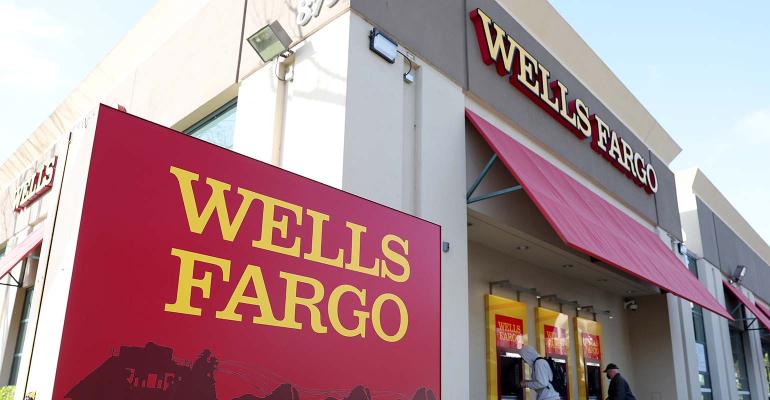Clients with Wells Fargo’s wealth and investment management divisions continued allocating cash into higher-yielding alternatives as interest rates climb, according to the bank’s first quarter earnings.
At the end of the Q123, cash alternatives made up about 12% of Wells Fargo’s total client assets in wealth, compared with approximately 4% from a year ago, according to Mike Santomassimo, an executive vice president and the bank’s chief financial officer. Santomassimo and CEO Charlie Scharf held a call Friday morning to answer questions about the previous quarter’s earnings.
The cash reallocation led to lower deposit balances, which partially offset gains in the division’s net interest income driven by the rise in interest rates as the Federal Reserve continued its skirmish with inflation. NII grew by 31% year over year, though it was down 7% from 4Q22.
Santomassimo said the bank’s wealth business remained fairly stable without accelerating or decelerating “at any significant clip.” He didn’t foresee any immediate changes.
“We’re capturing those cash alternatives that people are buying in the wealth business, so I think that trend will continue for a while,” he said.
Total revenue was down 2% year over year, due to lower asset-based fees because of lower market valuations, but noninterest expenses were also down 4% from the first quarter of 2022, partially due to lower revenue-related compensation (though expenses climbed 12% from the previous quarter). Total client assets dropped 7% YoY from approximately $2.1 trillion to $1.9 trillion, with advisory assets and brokerage assets dipping by 10% and 5%, respectively.
Scharf noted Wells was one of the institutions to assist First Republic during this year’s banking crisis, depositing $5 billion in uninsured cash to boost the bank’s liquidity, and stressed the banks that failed during Q1 (including Silicon Valley Bank and Signature Bank) had business models with a heavy reliance on uninsured deposits, which differed from customers’ perceptions of the “typical” regional bank.
But despite the bank crises and the persistent worries of economic uncertainty, consumer spending and the majority of Wells Fargo’s business remained “strong,” according to Scharf.
“We’re looking for signs of accelerated deterioration in asset classes or segments of our customers,” he said. “And broadly speaking, we saw little change in the trends from the prior quarter.”
A growing area of weakness was in commercial real estate, with Wells reporting the bank had $154.7 billion of outstanding CRE loans, 16% of its total loans, and $35.4 billion in CRE office loans, as of the quarter’s end. But nearly 70% of the office loans originated in customers of the bank’s Corporate and Investment Banking Division, with only 4% originating with the Wealth and Investment Management clientele.
JPMorgan Chase boasted big profits in the first quarter with net income up $12.6 billion, a 15% boost from the previous quarter and a 52% jump YoY. In the bank’s asset and wealth management arena, net income jumped $1.4 billion YoY, a 36% increase.
Net revenue in wealth climbed by 11% to $4.8 billion, based partially on higher deposit margins on lower balances, though noninterest expenses also climbed by 8% to $3.1 billion, driven by higher compensation due in part to rises in head count, compensation and acquisition costs.
The wealth and asset management division’s $3 trillion in managed assets and $4.3 trillion in total client assets were up 2% and 6%, respectively, from the year before, and the total head count climbed by 15% over the past year, from 23,366 in Q122 to 26,773 in Q422. Notably, revenue generated through “commissions and other fees” dipped; total Q123 revenue from these fees was $181 million, a 16% drop YoY and a 35% drop from the previous quarter.
Chairman Jamie Dimon said the economy remained on “generally healthy footings,” with strong consumer spending and balance sheets, but acknowledged that the recent shockwaves in the banking sector spurred by SVB’s collapse added more uncertainty.
“The banking situation is distinct from 2008 as it has involved far fewer financial players and fewer issues that need to be resolved, but financial conditions will likely tighten as lenders become more conservative, and we do not know if this will slow consumer spending,” he said.





